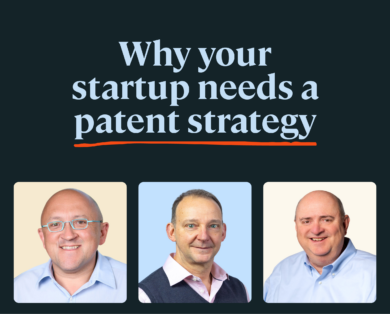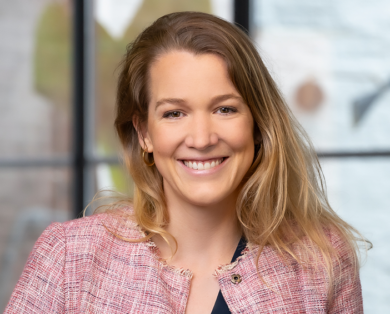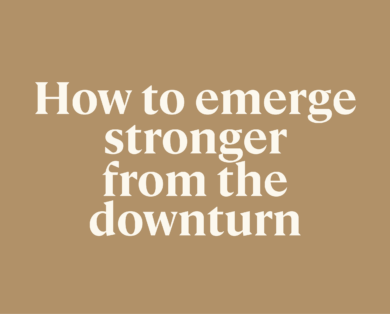- 24 July, 2024
If you’ve started a company and want to raise your first round of financing from a venture capital firm, you’re probably at Seed or Series A stage.
The exact definitions of these labels are constantly in flux and probably a good topic for a future post but, for now, let’s think of it as a very early investment into a company that still has a lot to prove.
A lot of people approach fundraising by writing down (in a Notion, in PowerPoint, on a napkin…) what they do and why it may be valuable one day. That’s sort of sensible but I always remember what a teacher once told me in high school before I sat my first real exams: don’t just write what you know; figure out what your audience wants first.
So what do VCs want from an early-stage company?
How will they analyse your company and decide if it is one which secures investment?
While all VCs are different, for most it boils down to some combination of three key factors: market, founders, traction.
Let’s take each in turn.
1) MARKET
Venture is a hits business. Firms make a large number of investments knowing that many of them will fail (estimates vary, but top tier funds will tell you that between a third and a half of their Series A investments return zero).
This means the ones that succeed must really succeed — they don’t just need to make money for themselves, they also need to make up for all that sunk investment in the companies that failed.
But you can only build a very successful company if the market your product addresses is really big. So, a key question every VC will try to bottom out is: just how big is the market for this company? When you put your pitch deck together and when you speak with the venture team, help them with this. How big is the overall market area you’re addressing?
What portion of that could be relevant to your specific product? Given that very few true monopolies exist, how much of that market can you realistically get? What other companies are already in or adjacent to this market — will they want to get into it and do they have the resource and vision to do so?
Remember that some markets may not yet exist (Uber is the canonical case for this) — that’s ok, but you’ll need to work even harder to convince the VCs the market is there (again, refer to how many people said no to Uber).
And how big is big?
Good VCs are looking for markets that will create a billion-dollar revenue opportunity in the long run – that’s the sort of scale you need (depending heavily on your margins of course but that’s too complex a twist for today!) to build a multi-billion dollar company.
And a company needs to have a multi-billion dollar outcome to solve the hits problem the VC has.
Bottom line: help the VC convince themself there is a large market of potential customers with money to spend on a solution in your product area.
The market should be so large that despite the fact you may only ever own (a tiny) part of it, the value of what you do will allow you to create a very large business in revenue terms. A market this large will always have others coveting it (if not today, then certainly in time) so also convince them that you have a combination of product and business model that will let you defend your position, if not today, then certainly over time as you grow.
2) FOUNDERS
Venture-backed companies change constantly.
Many essays have been written about the much loved ‘pivot’, but there are also companies that are complete restarts (Twitter is one of the most famous examples) and even companies that don’t pivot will course-correct constantly over the 7–10 year journey your early-stage investor is signing up for.
Good VCs will provide data, guidance, advice and a sounding board through these changes but they will want you, as founders, to actually spot the need for change and have the ability to execute on it. As a result, a key part of any early-stage diligence process is the founding team.
I was on a great video podcast recently on the sorts of things investors look for in founders so I won’t repeat it all here but your job is to present why you are a team that can be trusted to take this very broad market/product opportunity and, in the legendary words of Tim Gunn, make it work!
Some of what you need to demonstrate are unarguably and factual.
Being a repeat founder, having specific technical skills, or possessing documented experience in the market you are addressing. Some of what you need is about the qualities you possess — the ability to sell your company and its vision, the ability to hire great people, evidence of tenacity and energy, integrity and honesty, the ability to listen but also the ability to be decisive.
Think hard about how you are going to share all of these — some can be written down in a pitch deck, some of it is going to come from how you engage with the investor, how you carry yourself and the way you behave.
3) TRACTION
Great preparation and presentation can get you through much of convincing an investor of your Market and just how great a Founder you are. Traction is harder to manufacture. I think there are two reasons traction is important for early-stage investors.
First, it is early evidence that the idea you have really is resonating with the market you’re addressing. I think that’s a good reason. The data will be minimal and difficult to truly extrapolate from but it’s a good gut check of ‘yep, people are buying this’.
The nature of the traction itself (the unit of its measurement, if you will) is really something you control. If you’re an enterprise software company and you’re at Series A, it may be revenue, churn, sales efficiency and so on. If you’ve built a consumer app and you’re raising Seed, it may be extremely early data on how long users spend on the app daily, how viral it appears to be and the demographic to which it appeals.
This is also the realm of the ‘really clever stat that is unique to us’ game where a founder has to think hard about a measure that demonstrates something in line with how important their product is to their customer or user. Our portfolio company Funnel.io sometimes talked about the scale of budgets that are managed on its infrastructure — this shows how system-critical their software is to marketing teams.
In the early days, another portfolio company, Vivino, talked as much about ‘scans’ (of wine bottle labels) as it did about users or revenue: users who scanned a lot and in a variety of contexts were clearly embedding Vivino into all of their wine buying, drink, sharing.
Less obviously, traction is evidence that you have actually started. Entrepreneurialism is just quite messy. A decent minority of people have the book smarts, on paper, to be great founders. Great degrees, plenty of ambition, a good idea, an intriguing market and so on. But then, when they actually open up shop, they freeze. They’re unable to get that first sale done, they tinker the engine they are building or product they are designing to oblivion — it’s a thing of beauty, but it’s still in the garage.
In full disclosure, I was one of these founders at first. I had the glittering resume and the market we worked on made a lot of sense, but there was a lot of building, thinking, planning — what the Brits call ‘faffing’ — at first. It took a call from a close mentor to get me into action. He listened to a long call from me and then just said, ‘that’s all great Suranga, now get out and actually go do some shit.’ Luckily I realised he was right and followed the advice that day and kept doing it every day for the near-decade that I was a CEO.
So, again, when you meet that investor be sure to demonstrate traction.
Show the evidence that your product is working as planned — that it resonates with the customers your market promises and that there are some interesting insights that show you might be onto something very special. But, equally, make sure the investor sees that you aren’t just doing this all on paper from an office in the corner — show your doggedness, show your progress; some of the least privileged people I know have built something out of nothing, prove that you can too.
 SURANGA CHANDRATILLAKE
SURANGA CHANDRATILLAKE 









